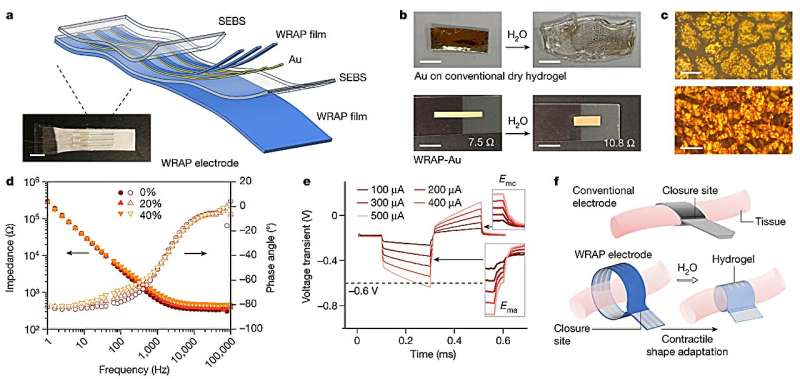December 14, 2023 report
This article has been reviewed according to Science X's editorial process and policies. Editors have highlighted the following attributes while ensuring the content's credibility:
fact-checked
peer-reviewed publication
trusted source
proofread
Scientists develop a polymer film inspired by spider silk to connect biological tissues with electronic devices

A team of materials scientists affiliated with several institutions in Singapore and China has developed a spider-silk-inspired polymer film that may be used to connect biological tissues with an electronic device. Their results are reported in the journal Nature. The editors at Nature have published a Research Briefing outlining the work in the same issue.
Scientists have been working to develop a material to connect biological tissue with an electronic device for quite some time—such a material would allow for medical implants that would not be rejected, for example, or connections of prosthetic limbs or devices to control organs, such as heart pacemakers. Most such efforts have fallen short, however, due to problems with stiffness and immune response or the introduction of other safety issues.
One promising avenue of research has involved the study of soft, thin films that could be applied to an organ, such as the heart, that would shrink-wrap upon application—similar to the way that plastics are used to shrink-wrap consumer products. Prior efforts have shown promise, but have suffered from firmness issues and a scarcity of materials that shrink when exposed to human body temperature or water. In this new effort, the research team has overcome these issues.
To create their film, the researchers looked to spider silk draglines, which shrink when exposed to high humidity or water. The team created a polymer with crystalline properties similar to silk draglines with an initial structure that remains in place until exposure to water—the water breaks down the crystal structure, forcing the structure to contract.
The team named their product a water-responsive, shape-adaptive polymer (WRAP) film. Testing showed their films not only shrink but also conform to objects when stretched over them. The team next created electrodes for use with their WRAP by using electron-conductive metal layers with an insulating material covering them. They then applied the electrodes by encapsulating them using another insulation layer.
Thus far, the researchers have tested their film only in lab settings, but they are confident it will work well in the body, and once that is shown, products based on it should prove suitable for use in a wide variety of medical applications.
More information: Junqi Yi et al, Water-responsive supercontractile polymer films for bioelectronic interfaces, Nature (2023). DOI: 10.1038/s41586-023-06732-y
Polymer films inspired by spider silk connect biological tissues and electronic devices, Nature (2023). DOI: 10.1038/d41586-023-03653-8
Journal information: Nature
© 2023 Science X Network





















